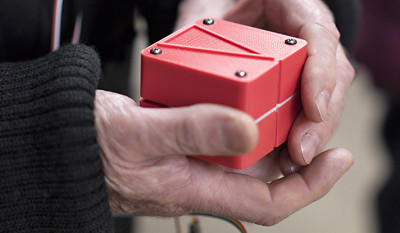Researchers have been inventing new ways to utilize GPS for pedestrians for years. From haptic feedback placed inside of shoes or clothes to canes for the sight-impaired, there have been a number of solutions to the problem of how to get directions without looking at a screen or a map.
Yale researchers have developed what I think is probably one of the cooler methods for navigation. Called the Animotus, this 3D printed cube is designed to move and twist to indicate to the users which direction to walk. When users reach their destination, the cube twists back to its original shape.
Researchers believe that the shape-changing technology is less obtrusive than haptic feedback and more intuitive than written directions. Additionally, the cube does not rely on verbal directions, as outside noises can sometimes make it complicated. While the device was originally created as part of an experiment and to to be used in a theatre production called “Flatland” the researchers were surprised to find that audience members were surprisingly comfortable with the technology, even when directed through pitch blackness.
Here’s a video from the “Flatland” production showing briefly how it moves:
Yale News reported that during the production, in which audience members used Animotus to find their way around a dark church, the average audience member only walked .3 meters slower than they would otherwise and that most people were fairly confident with the device. Researchers in the same paper said they were interested in continuing the technology and seeing if there are other uses for it such as hiking or just regular pedestrian travels.
Personally, while I’m not really sure how well something like that would work while on the trail, I have to admit that the sci-fi nerd in me absolutely loves the idea of shape-changing technology being utilized for navigation. I’ve never been a fan of haptic feedback as it tends to be a little too jarring to me.
From what it looks like, there aren’t really any formal plans on mass producing or commercializing the device, and the articles I could find were vague on exactly how the cube worked. Does it use GPS? Are maps included or is it simply a route plotted before hand and Wifi/Bluetooth technology tells the cube where it is? Does it sync with a computer or smartphone?
Regardless, it’s neat to see all of the crazy inventions people come up with in the name of navigation and technology.

